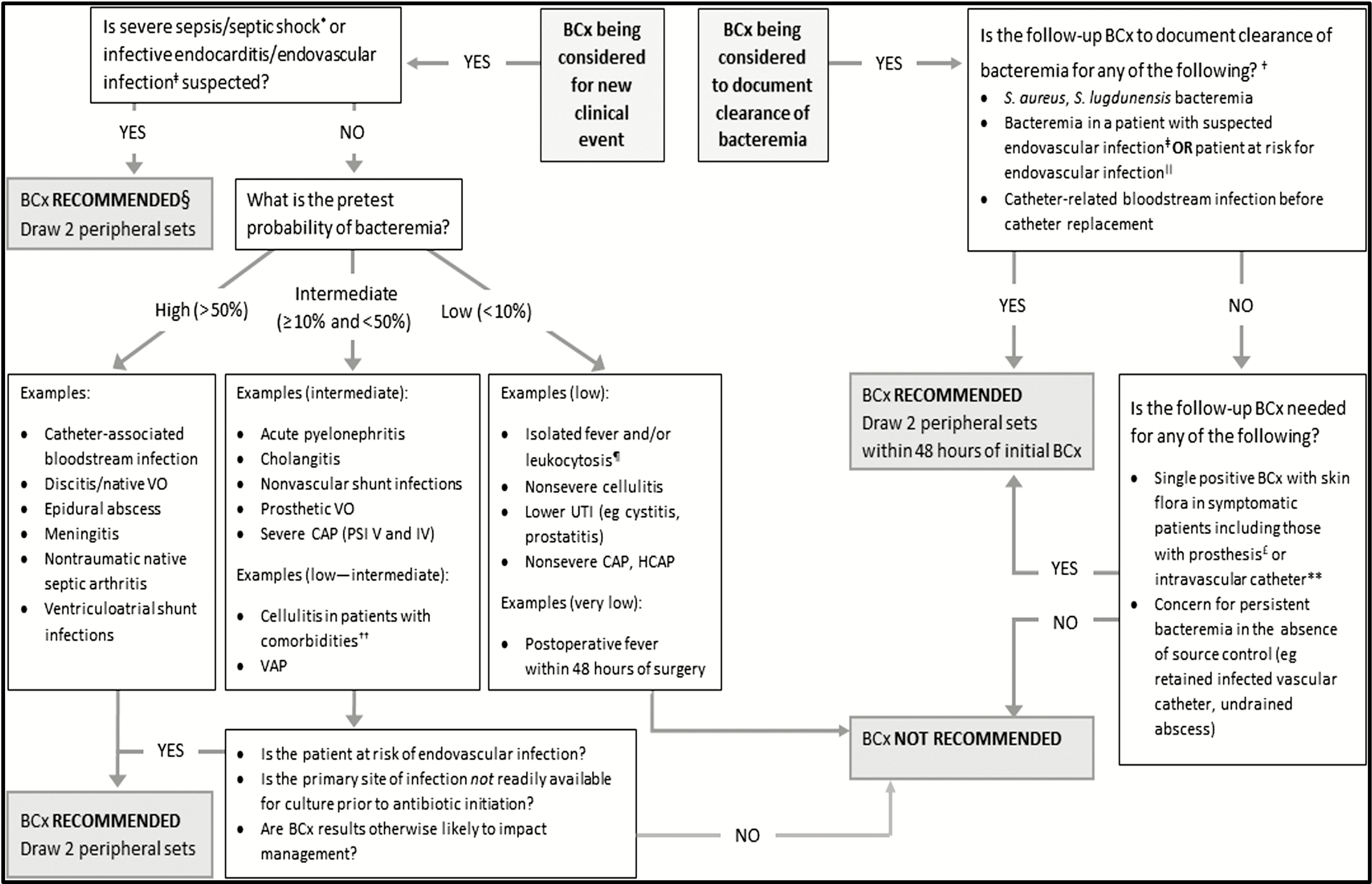
Michael Mazzeffi, MD, MPH, MSc, FASA, George Rich Professor of Anesthesiology Interim Chair, and Vice Chair Faculty Affairs and Development, Department of Anesthesiology; Jacob Jordan, BSN, RN, Assistant Nurse Manager, Thoracic Cardiovascular Intensive Care Unit (4 South); Hilary Bowen, MSN, RN, CNL, ACCNS-AG, CCRN, CEN; Akram Zaaqoq, MD, MPH, TCV ICU Medical Director, Associate Professor of Anesthesiology; Ashley Wade, BSN, RN, CCRN-K, Nurse Manager, Thoracic Cardiovascular Intensive Care Unit; Emily Schneiderman DNP, RN, ACNPC-AG CCRN-CSC, Nurse Practitioner TCV ICU, Manager, TCV ICU Advanced Practice; Marcy White, RN, MSN/MHA, RN, MA, CNML Inpatient Director, Heart and Vascular.
At the heart of our Thoracic and Cardiovascular ICU (TCV ICU), where some of our most vulnerable cardiac patients receive care, a quiet transformation has been unfolding.
It began with an ongoing observation by the team that blood cultures were often ordered “just in case.” While well intentioned (these tests can detect serious bloodstream infections), they also came with downsides. The potential of false positives and resulting unnecessary antibiotics and increased costs, as well as patient discomfort, left the team wondering if there was an opportunity to do better.
Refusing to accept the status quo, the TCV ICU team put their heads together — including physicians, fellows, nurses, residents, APPs, and lab techs — to rethink blood culture use. Using evidence-based quality-improvement methods, they applied tools like SIPOC mapping, the 5 Whys, and Lewin’s Change Model.
In October 2023, the team implemented a Decision Tree to help clinicians determine if and when a blood culture test was truly needed. They engrained this new approach into daily huddles and workflows and even posted laminated copies of the Decision Tree on every work computer.

The results? Incredible. Over three years, the team reduced unnecessary blood cultures by 87%, avoided 2,300 tests, and saved more than $337,000 — all without increasing length of stay or adverse patient events. In fact, central line-associated bloodstream infection (CLABSI) rates went down!
But the true impact went beyond improving metrics. This was a cultural shift — from habit to intention, from routine to reason, from “just in case” to “what’s best for the patient.” The team redefined practice norms by replacing reflexive testing with thoughtful, evidence-based care.
Last week, I shared about Multipliers — individuals who ask bold questions, encourage input, and bring out the best in one another. The TCV ICU team is a perfect example of these traits in action.
This is what true excellence looks like: not just following best practices — but helping shape them. Through a unified, patient-centered approach and holding onto their “why,” the TCV ICU team has driven meaningful and lasting change.
To the TCV ICU team: thank you for leading with intention, championing stewardship, and reminding us of what is possible when excellence meets heart.
Take care and be well,
Wendy